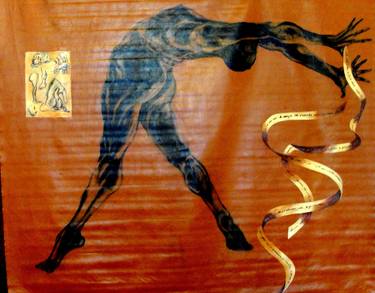Succubus

Succubus –
I had walked with him till the graveyard.
He would not rest in the sepulcher,
He wanted to return to his former haunts.
Is he dead? I often wondered.
They all called him hellion.
All.
He liked it.
I looked at his coffin.
The tomb had rotted.
The rancid smell –
I looked at Succubus,
The body was white but his blood was warm.
His lips were still soggy with the blood he had guzzled.
Succubus called his women “My fair lady”
They felt his shockwaves in their feet.
They liked him as did I adore Succubus and his thirst for
blood.
“Succubus” I called out his name.
He rose from the grave.
No, he did not look like a story book vampire,
With colossal fangs.
Neither did he dislike garlic and crucifixes.
Nor was he a cannibal –
His sense of humor was dark like mine.
He never was emotional.
I panicked when he delved his canines in my neck.
He said, “Let not your blood go for waste”.
He said he will return again for me, my blood.
Succubus –
I approached the bench where he sat sucking my blood.
He was gone.

The Moirae. Series: Incubus/Succubus -- Rosana Mendes Campos
A succubus is a demon in female form who appears in dreams and takes the form of a woman in order to seduce men, usually through sexual activity. The male counterpart is the incubus, who may also be bisexual. An incubus may pursue sexual relations with a woman in order to father a child, as in the legend of Myrddin (Merlin). Children so begotten (cambions) were susceptible to supernatural influences (babies born deformed were assumed to be cambons). Tommaso d'Aquino (Thomas Aquinas), in his definitive "Summa Theologiae," declared that "if some are occasionally begotten from demons, it is not from the seed of such demons, nor from their assumed bodies, but from the seed of men, taken for the purpose; as when the demon assumes first the form of a woman, and afterwards of a man; just so they take the seed of other things for other generating purposes." In 1486 Heinrich Kramer (Institoris), in "Malleus Maleficarum" (Witches' Hammer), opined that succubi collect semen from men they seduce, which incubi then use to impregnate human females. In 1597 James VI of Scotland (the future James I of England) published "Dæmonologie" and explained that succubae and incubi were the same demonic entity but were described differently based on the tormented sexes being conversed with; a devil would either steal sperm from a dead man and deliver it into a woman or possess a corpse and have sexual relations with women. Repeated sexual activity with a succubus or incubus would result in the deterioration of health or mental state, or even death. Ludovico Maria Sinistrari, an influential 17th-century Franciscan advisor to the Supreme Sacred Congregation of the Roman and Universal Inquisition, insisted that these demons "do not obey exorcists, have no dread of exorcisms, show no reverence for holy things, at the approach of which they are not in the least overawed." However, not all succubi were malevolent: In "De Nugis Curialium" (Trifles of Courtiers), Walter Map claimed that a succubus named Meridiana had helped Gerbert d'Aurillac become pope Sylvester II (999–1003). The terms originated from Late Latin in the late 14th century: "succubus" is from "succuba" (paramour), derived from "succubare" (to lie beneath) and "cubare" (to lie in bed), "incubus" from "incubo" (a nightmare induced by such a demon), derived from "incubare" (to lie upon). The underlying concept is ancient and widespread: one of the earliest mentions was on the Sumerian King List (ca. 2400 BCE), which said Gilgamesh's father was the storm demon Lilu who disturbed and seduced women in their sleep; Lilitu was a female demon who appeared to men in their erotic dreams; Ardat lili visited men by night and begot ghostly children from them, while Irdu lili visited women by night to beget children.)
ReplyDelete